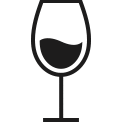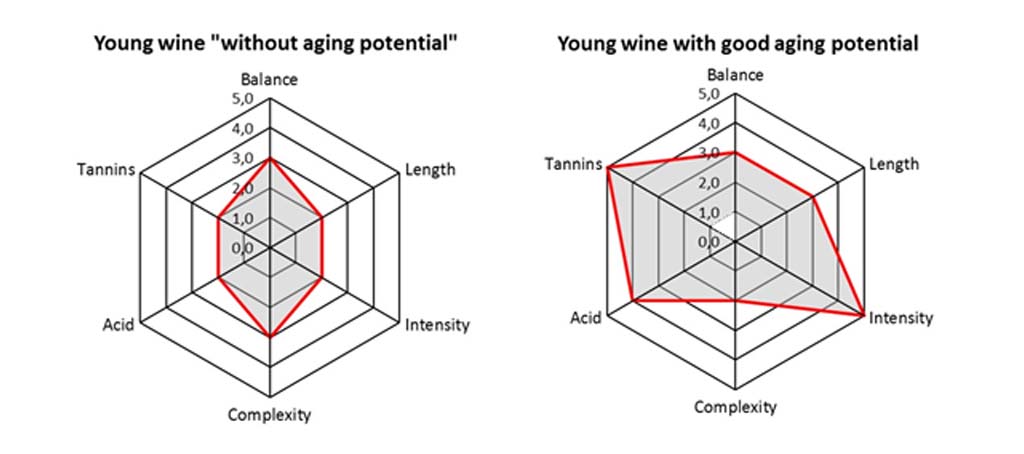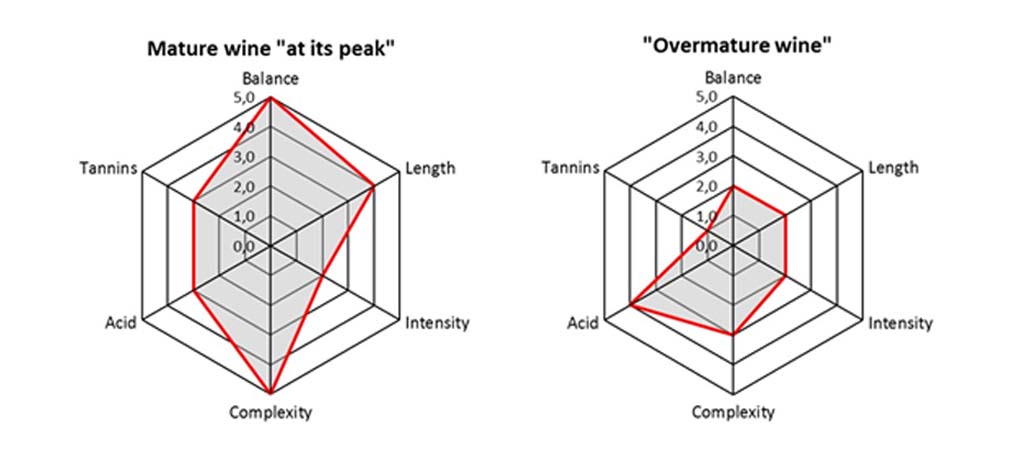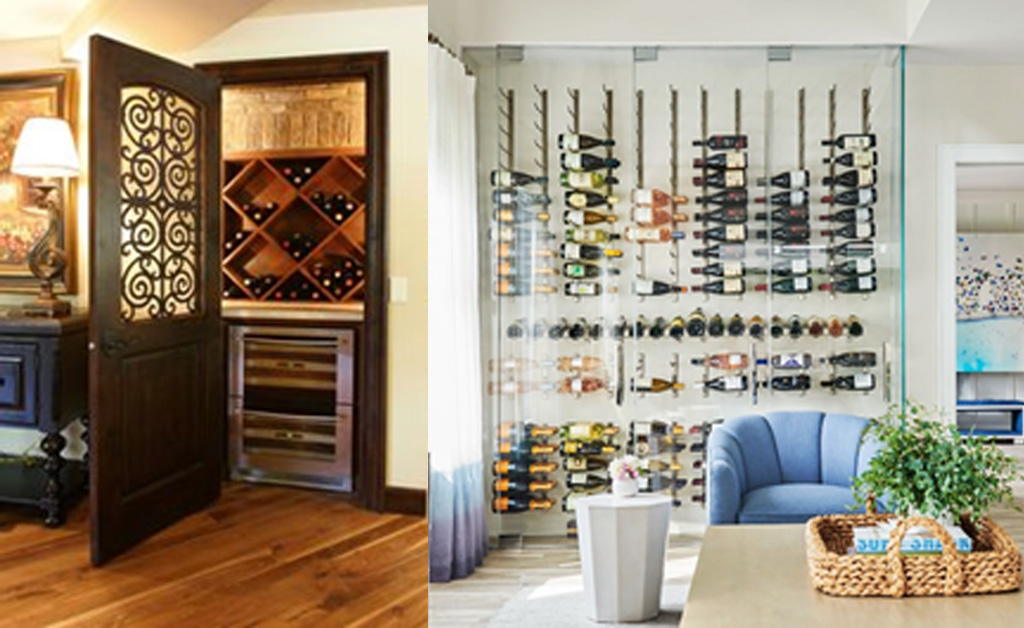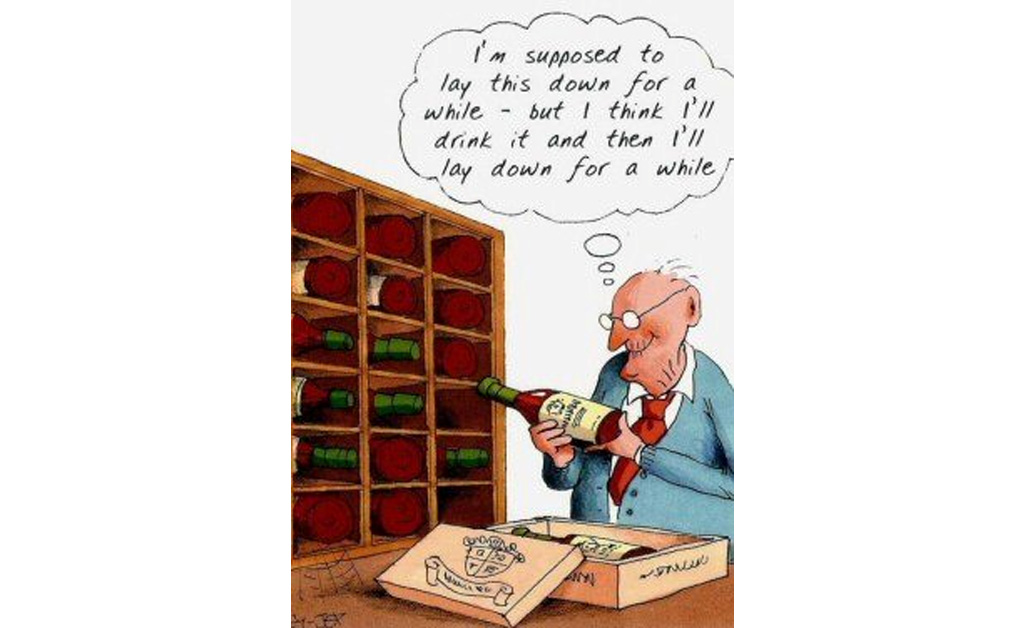Wine Is a Balancing Act
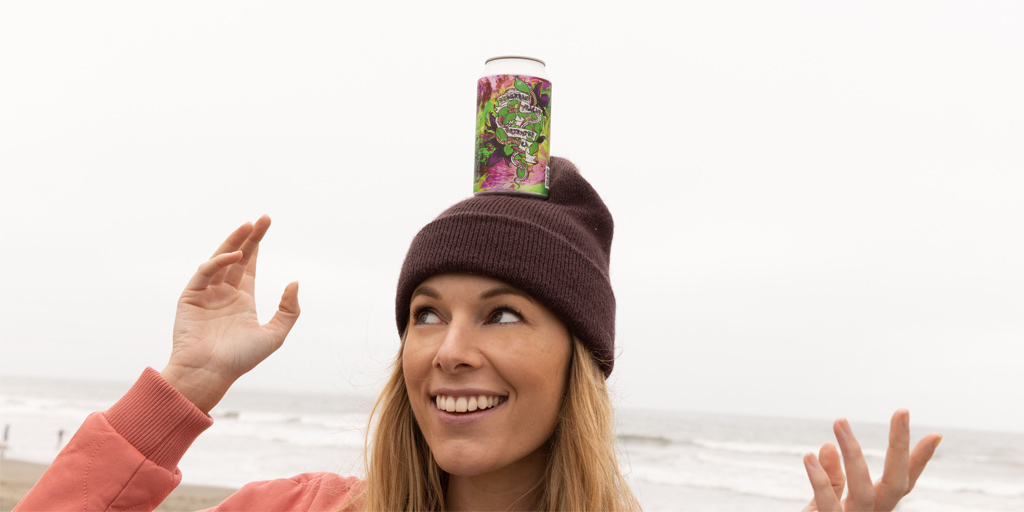
I am often asked to interpret and explain the aging potential for each wine we produce.
I know, I know everyone is so excited to receive or purchase a bottle of wine, they are tempted to open it right away. Not all wines improve with age. Most wines purchased today are designed for more immediate consumption. Some of them can quickly lose their freshness and fruitiness after less than one year. Sparkling, red, white, rosé and sweet wines are all fighting time in different ways. On the other hand, barrel fermented, barrel-aged, sweet wines like Muscat or Riesling, red wines with tannins like Cabernet Sauvignon, Merlot, Cabernet Franc and Bordeaux will all improve with age because of the way they were made.
As you often read in my wine tasting notes, a good wine needs fruit, tannin and acidity to be appealing. Inside the bottle, there are symbiotic interactions between all those components giving birth to new flavors. The following graphics, from Mattias Schyberg, compare very well the potential of a wine.
The balance makes room for all components without giving one more importance than the others. Imagine blending yellow and blue to make green. There are of course many shades of green, depending on the initial amount of primary colors used. The intensity refers to a concentration and the complexity describes the aromatic diversity found in wine. The term “length” is often used to describe the number of seconds during which your palate experiences a flavor. If the alcohol is too high and unbalanced, you will get a warm sensation in your mouth. There is length and intensity, but in this case, the wine is not complex nor balanced.
As you often read in my wine tasting notes, a good wine needs fruit, tannin, and acidity to be appealing and to age for a long time. Inside the bottle, there is a constant evolution with a micro-oxidation thru the cork. This phenomenon is also happening with screw-cap closure but at a much slower pace.
Going over its maturity could accentuate some of the worst characteristics of a wine. Winemakers should aim for the most balanced wines as possible to bottle.
I also want to briefly mention that the conditions of aging are also crucial. Too much heat could dry out the cork and create leakage. Cellars provide the ideal habitat for aging wine, as they are cool and free of vibration — as well as damp and dark. If you do not have a wine cellar, you can try to replicate this environment by finding the coolest and darkest spot in your house. I know that many people may have to choose between room for their shoes or space for wine in their walk-in closets. What a dilemma!
I am pleased to say that our warehouse has upgraded its refrigeration system. We are constantly improving our resources to protect and favor the correct evolution of our bottles.
Enjoying wines by trial and error is always the best. That way, you grow to know yourself and your preferences over time. You might actually discover a new favorite flavor along the way.
